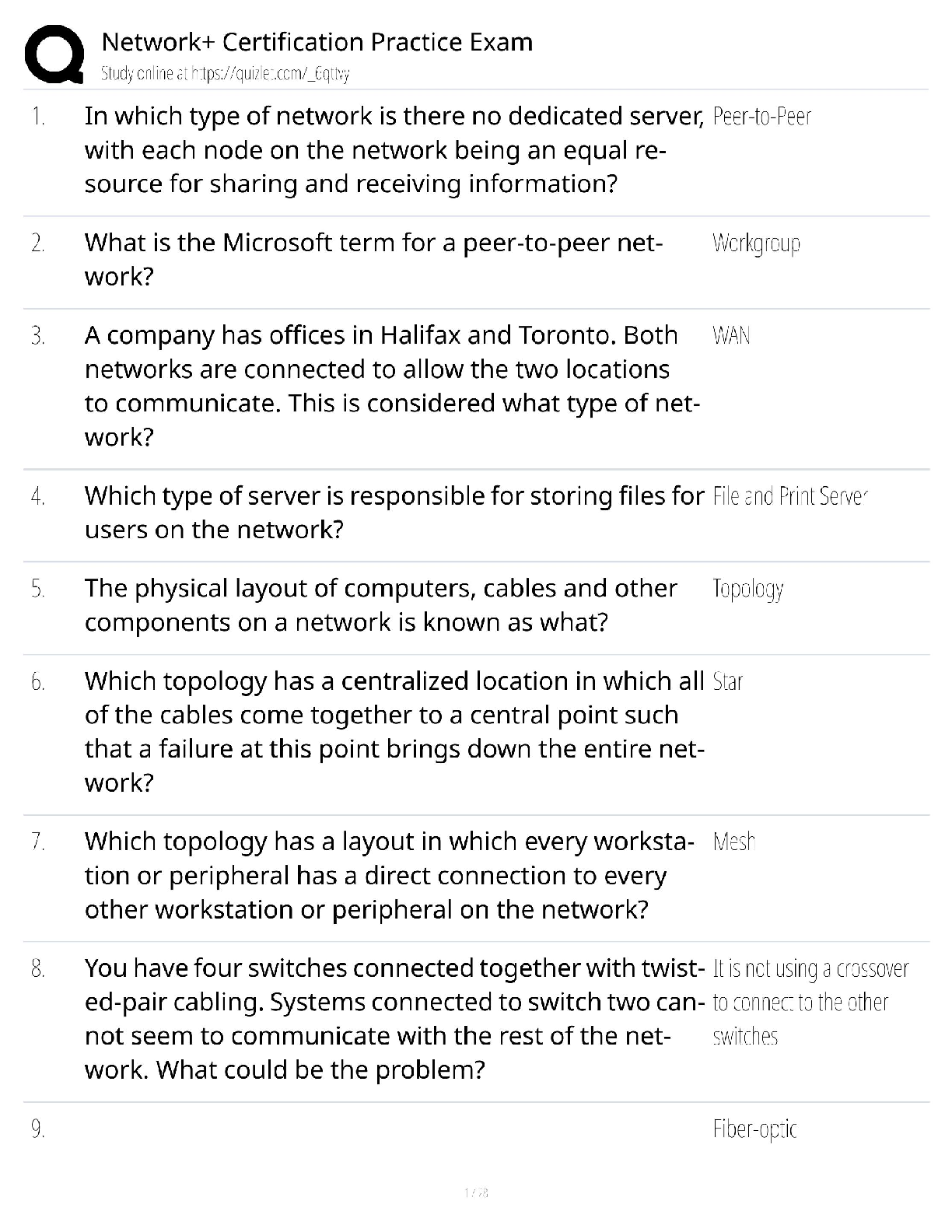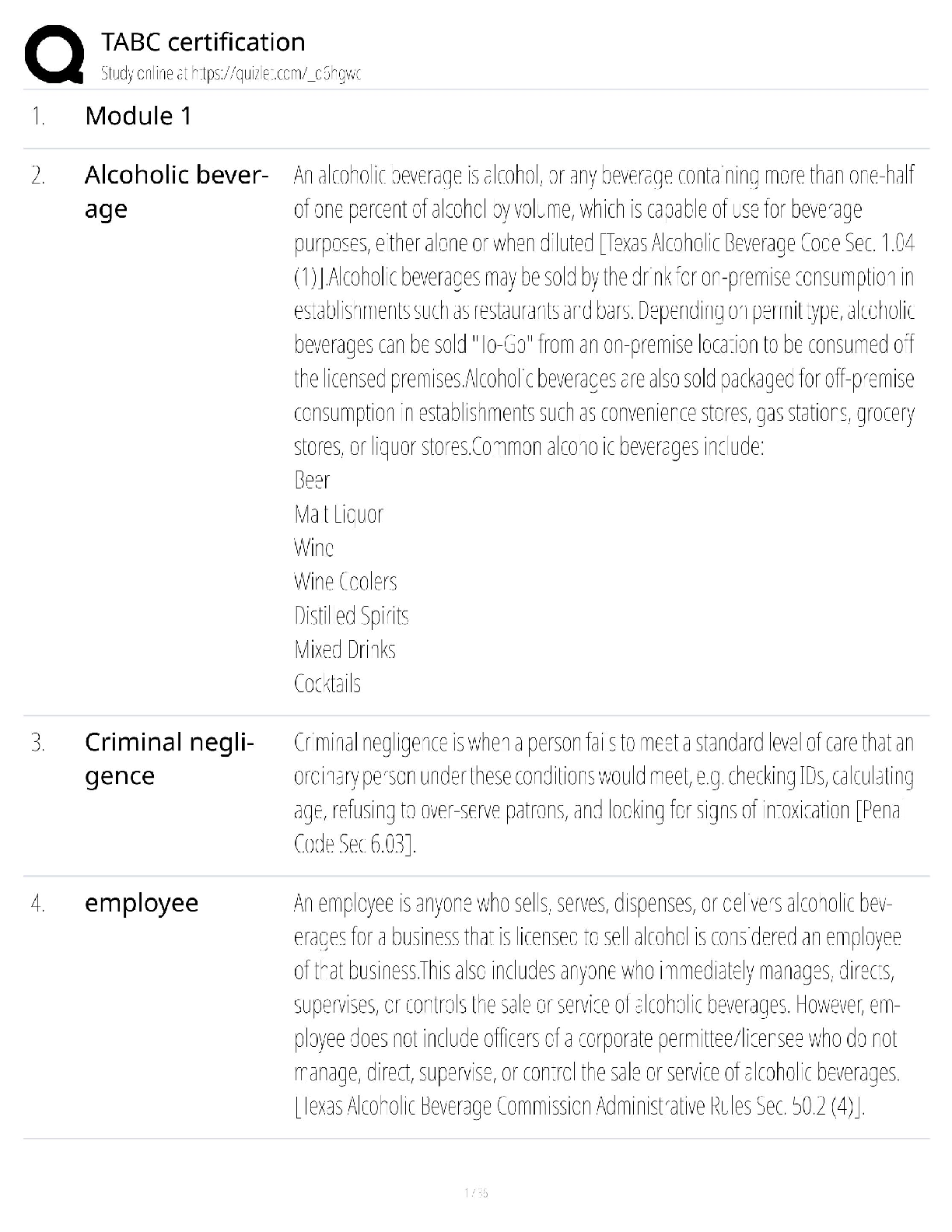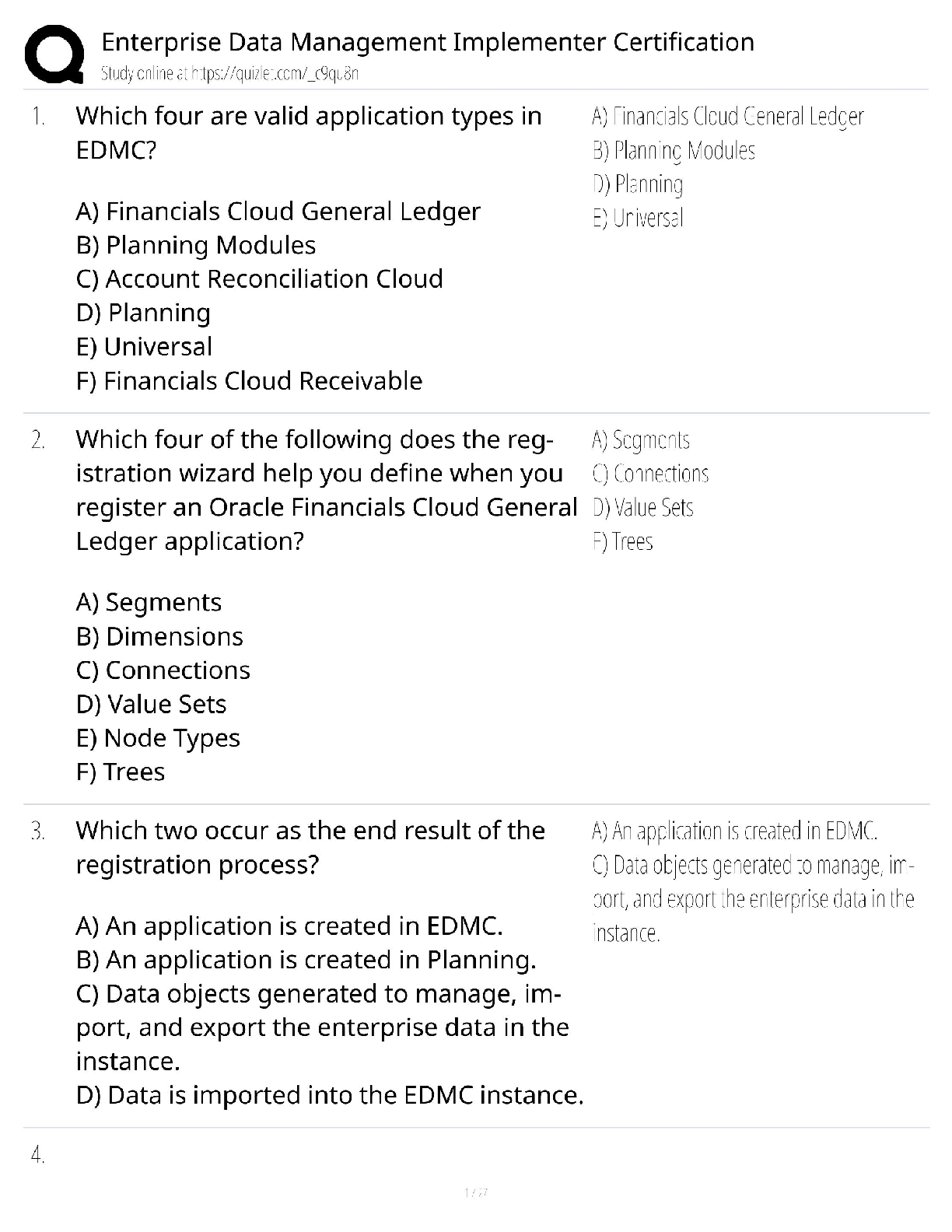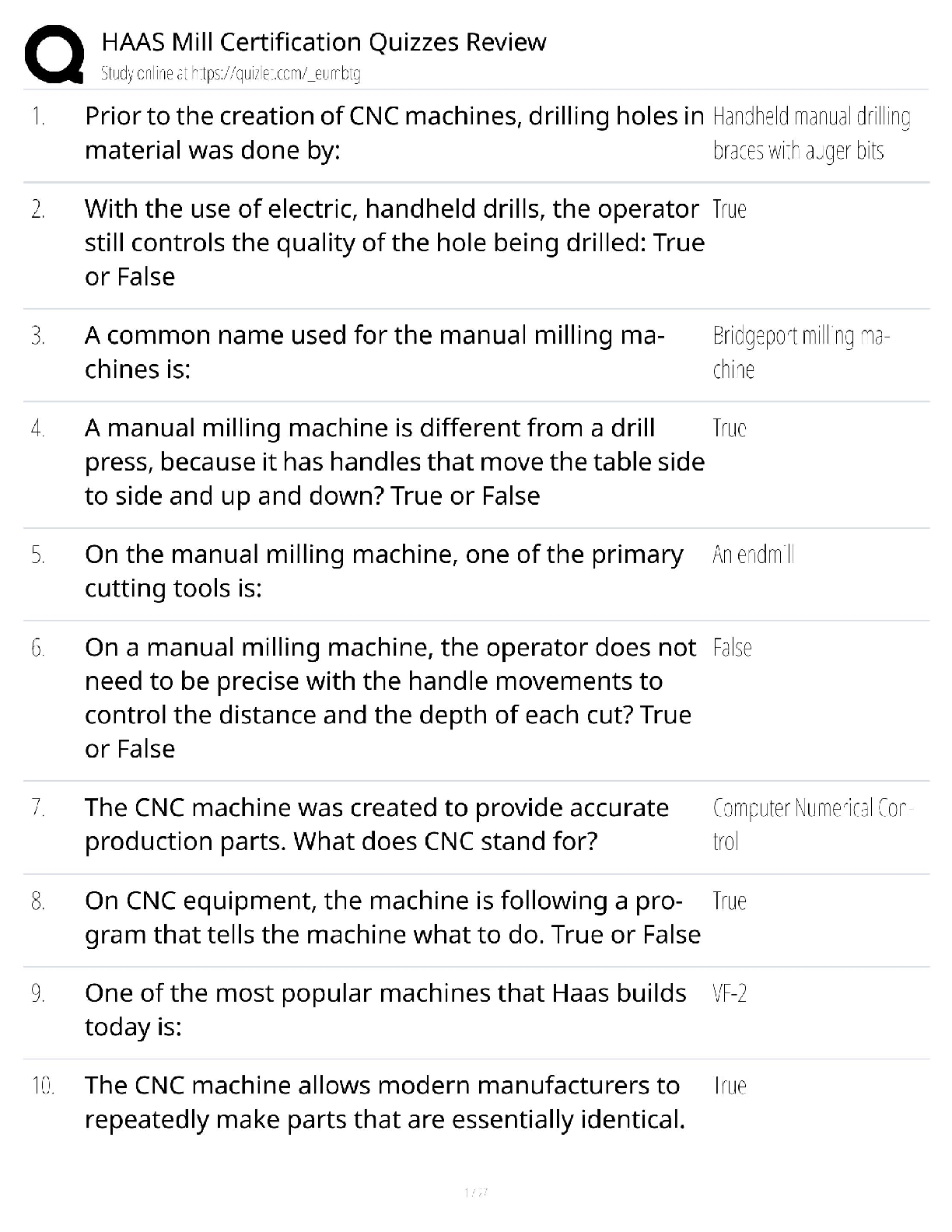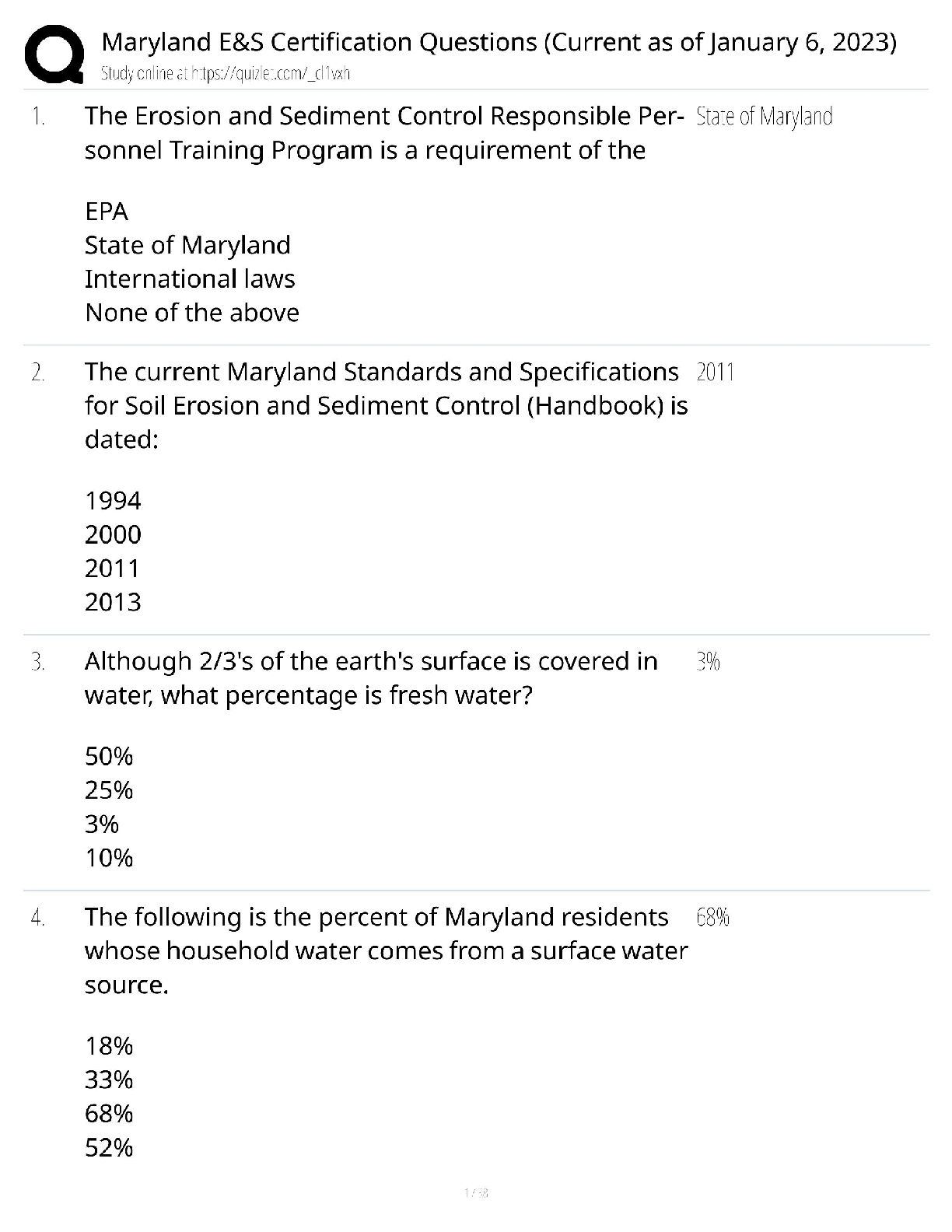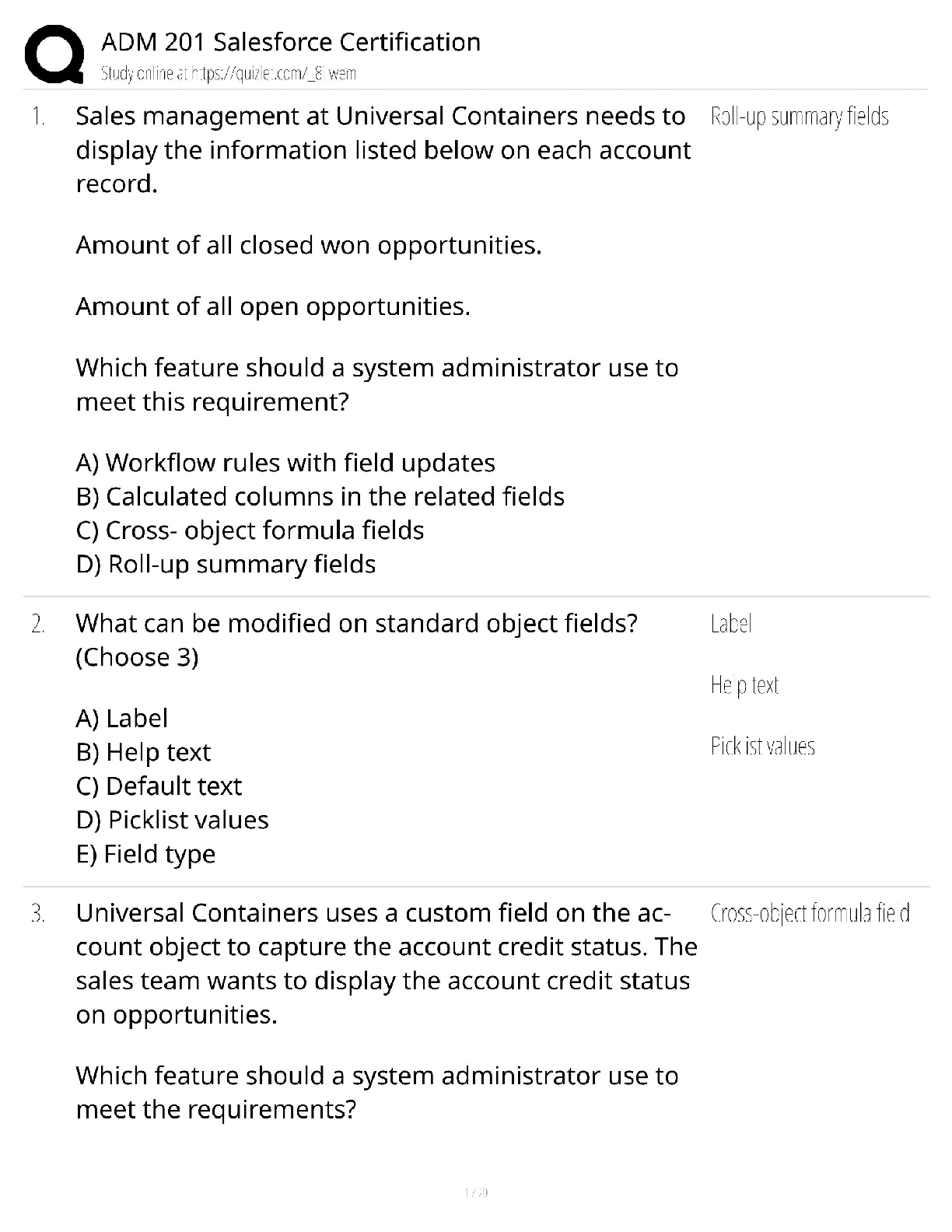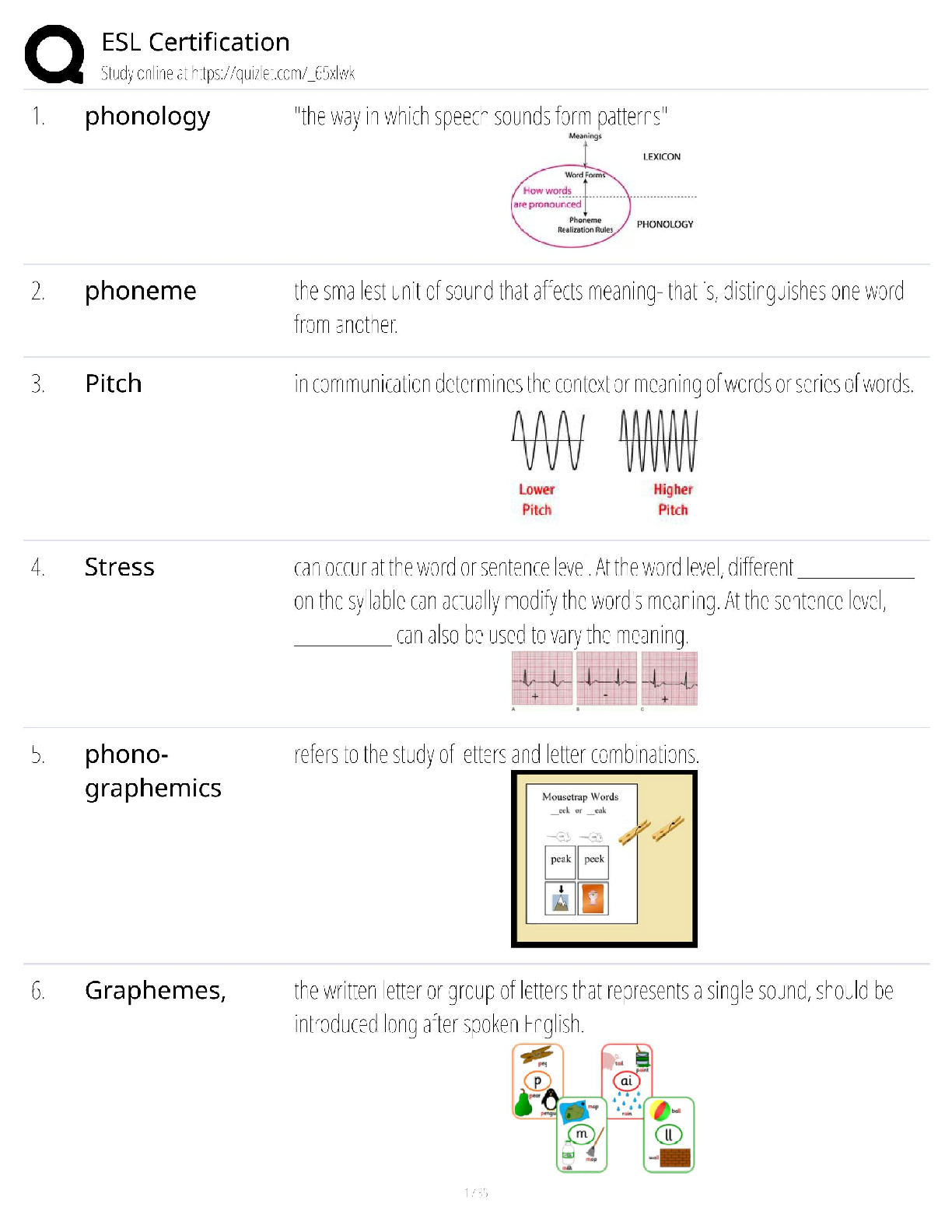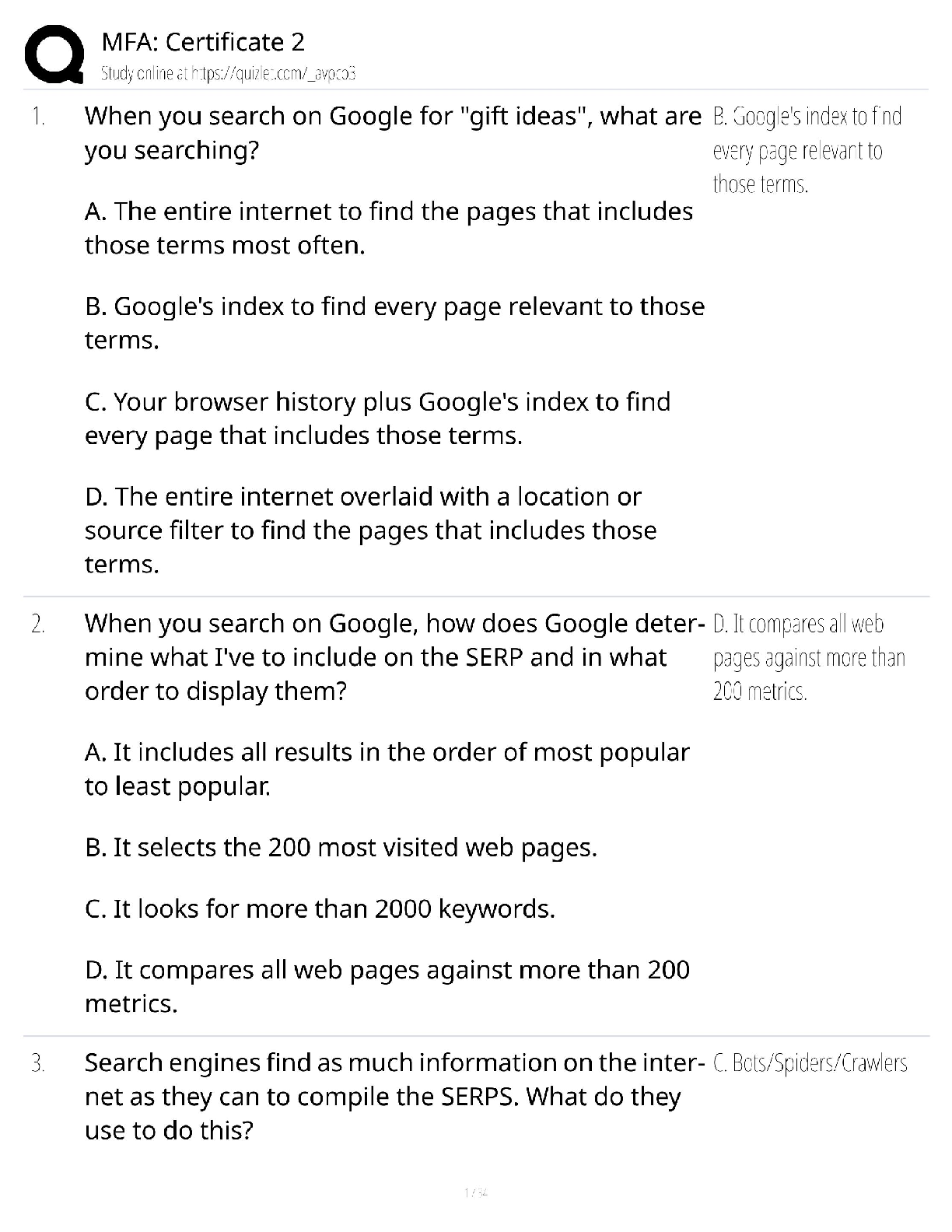Financial Accounting > QUESTIONS & ANSWERS > Strayer University, Washington ACC 557 Quantitative Methods Week 1 Quiz (All)
Strayer University, Washington ACC 557 Quantitative Methods Week 1 Quiz
Document Content and Description Below
Week 1 1. Here is an example of a positioning statement for Volvo: "For upscale American families, Volvo is the family automobile that offers maximum safety." In this example, what serves as the fra ... me of reference for the positioning statement? Volvos Other family automobiles Upscale American families The claim of maximum safety Unsafe cars 2. Which of the following is NOT an element of the marketing mix? Price Product Population Promotion Place 3. As the US has become more health conscious, we have seen many fast food chains like McDonalds and Burger King introduce healthier offerings like grilled chicken and salad options. This is an example of what course concept? Category Points of Parity Competitive Points of Parity Category Points of Difference Competitive Points of Difference 4. When Steve Jobs updated his company name from Apple Computer to Apple in 2007, which part of the brand positioning was he changing? Frame of reference Target segment Point of difference 5. Which of the following is NOT TRUE about the Generation Y cohort? They are independent and don't depend on social networking to connect with other members of their cohort. They appreciate free content, access to wireless internet, and customization. They were born between 1977 and and 1997. They account for 30% of the population. 6. PRIZM is a segmentation scheme that defines the country based on what type of clusters? Cohort Geographic Demographic Occupational 7. In a buyer's market, the buyer has the power and the market is ______-focused. Product Customer 8. According to the lectures, what should a company's long-term marketing strategy be? To be AT fair value (operational excellence, performance superiority, and customer intimacy). To be the best at one dimension and good enough at the other two dimensions (operational excellence, performance superiority, and customer intimacy). To be ABOVE "fair value" on each dimension (operational excellence, performance superiority, and customer intimacy). 9. In the STP framework, what does "STP" stand for? Segmentation; targeting; pricing Sizing; targeting; pricing Segmentation; targeting; positioning Sizing; tabulating; positioning 10. What is marketing? The study of brand positioning The study of selling products The study of buyers and sellers The study of a market, which is an exchange between two partners Week 2 1. Because of technology-enabled product development, product life cycles are much shorter now, and companies are constantly reiterating and thinking of new ideas. Which “crack in product centricity” captures this? Commoditization Innovation Globalization Saturation 2. Which of the following is NOT a crack in the product-centric approach? Customer attrition Smart customers Retail saturation Globalization Deregulation 3. Which of the following is not true about direct marketing? It allows companies to know who their customers are and what they buy The individual customer is the unit of analysis It determines and leverages combined customer value It aims to determine marketing communication based on past purchases 4. Which of these retailers would Professor Fader describe as highly customer centric? Starbucks Nordstrom All of them Walmart None of them Apple 5. What is the correct definition of customer centricity? Customer centricity is a strategy that aligns a company’s development/delivery of its products/services around the current needs of a select set of customers in order to maximize their longterm financial value to the firm. Customer centricity is a strategy that aligns a company’s development/delivery of its products/services around the future needs of a select set of customers in order to maximize their longterm financial value to the firm. Customer centricity is a strategy that aligns a company’s development/delivery of its products/services around the future needs of a select set of customers in order to maximize their shortterm financial value to the firm. Customer centricity is a strategy that aligns a company’s development/delivery of its products/services around the current and future needs of a select set of customers in order to maximize their long-term financial value to the firm. 6. Professor Fader discussed “salesperson of the month.” What would he say is the best way to pick a salesperson of the month? The change in total customer lifetime value for that month. The number of quality referrals they generate. The number of repeat purchases made by existing customers. The number of new customers brought in. 7. Is maximizing shareholder value the overarching objective for a customer-centric commercial enterprise or a product-centric commercial enterprise? Product-centric Neither Both Customer-centric 8. According to Professor Fader, success in a customer-centric world arises through enhanced and/or more efficient levels of the following EXCEPT: Customer retention Customer development Customer acquisition Customer experience 9. True or False. Customer centricity suggests that you should “fire” (i.e. get rid of) your least valuable customers. True False 10. In a product-centric company, sales bias is on the side of the ____________ in a transaction. Market Broker Seller Buyer Week 3 1. If you own a small bookstore in Philadelphia, are you more likely to sells books from the “head” or the “long tail?” Both The head The long tail Neither 2. What is the supply-side hypothesis for the existence of the long tail? People’s tastes are more varied because they have access to a greater variety of products. It’s now possible for sellers to offer a lot more variety because the economics of distributing those products have changed dramatically. The internet has allowed many more people to become product suppliers. Big hits are becoming even more popular among internet users. 3. The average level of satisfaction __________ as you go from the head to the long tail. Decreases Stays constant Increases 4. The Lorenz curve below shows that: Income is equally distributed in this population according to the Gini-coefficient Top 30% of the population holds 30% of all of the income 50% of the population holds 50% of all of the income Bottom 70% of the population holds 30% of all of the income 5. Research has shown that internet channels follow _________ distribution, whereas catalogues follow _________ distribution. an 80-20; a long-tail sales a long-tail sales; an 80-20 a long-tail sales; a Gini-coefficient a Gini-coefficient; a long-tail sales 6. There is a greater number of sales of niche products on the internet for all of the reasons below EXCEPT: Non-directed search High-quality images Directed search Reviews 7. The long-tail phenomenon is dependent on the: Neither the Supply side nor the Demand side Both Supply side and Demand side Supply side Demand side 8. Please choose the best answer. In the context of marketing, the Law of Double Jeopardy states that: Unfamiliar things are less well-liked People like to watch hits twice but usually no more than that You can’t be tried for the same crime twice Customers buy products and services that have been recommended by their peers 9. People who don’t read a lot of books tend to read best-sellers. What is this trend an example of? Long tail Gini-coefficient Law of Natural Monopoly Product centricity 10. Research shows that more “isolated” customers are _________ to shop online. Less likely More likely [Show More]
Last updated: 3 years ago
Preview 1 out of 11 pages

Buy this document to get the full access instantly
Instant Download Access after purchase
Buy NowInstant download
We Accept:

Reviews( 0 )
$7.00
Can't find what you want? Try our AI powered Search
Document information
Connected school, study & course
About the document
Uploaded On
Sep 29, 2022
Number of pages
11
Written in
All
Additional information
This document has been written for:
Uploaded
Sep 29, 2022
Downloads
0
Views
90





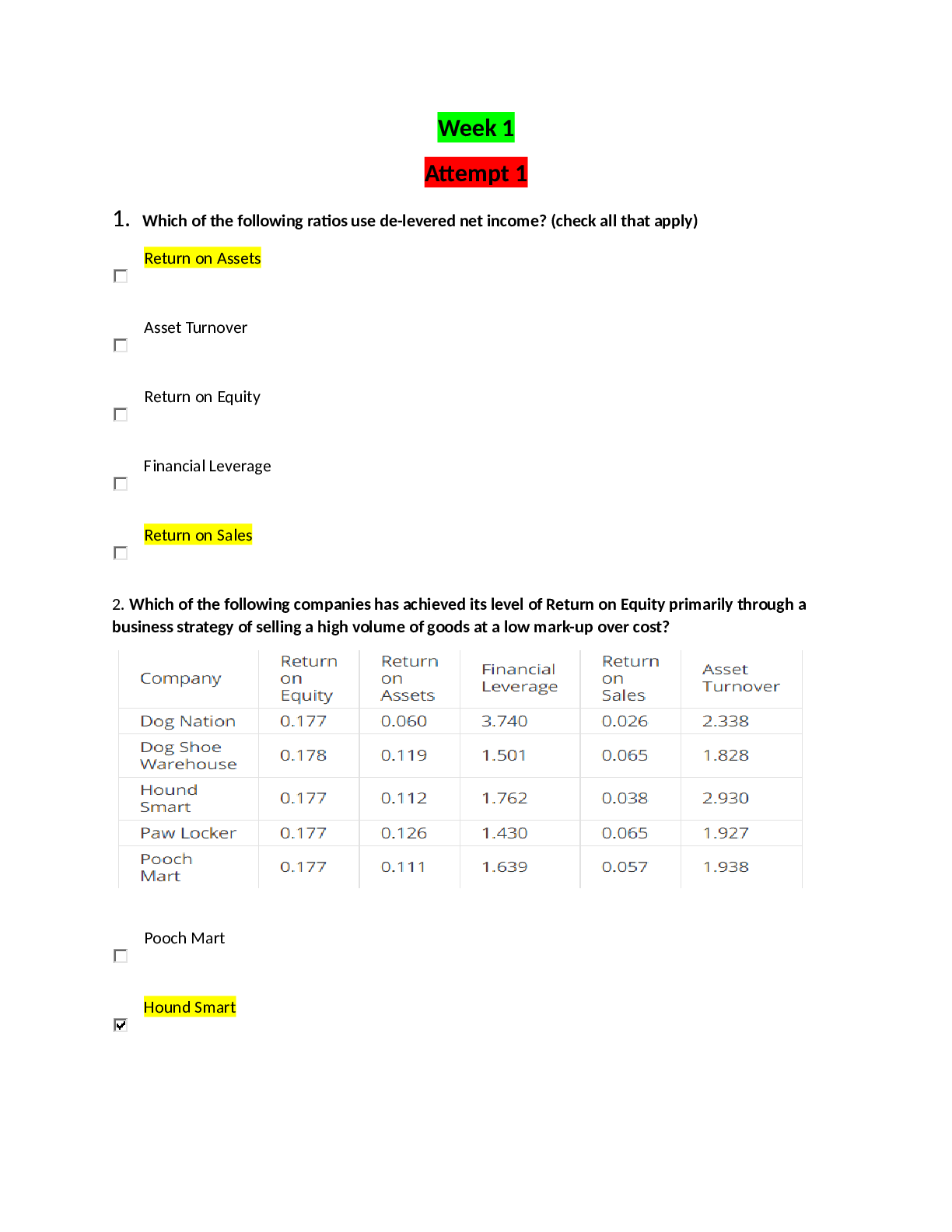
.png)
.png)
.png)
.png)
.png)
.png)
.png)


